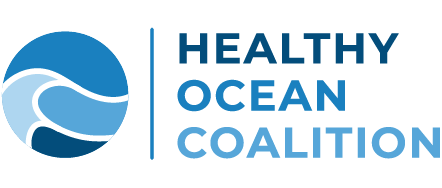When it Comes to Our Ocean, We Must Till and Keep It
When I was 8 years old, my family moved to southern California, where the San Gabriel Mountains became my backyard. Since then, I have been hooked on the natural world. Growing up, I did not think about access to — or use of — natural resources. I was more interested in studying rock formations and exploring new trails. But the symbiotic relationship between people and nature stuck with me: I needed those mountains as a place to clear my head, and I had a responsibility to protect the rich biodiversity that created my haven.
Photo Credit: Mohamed Nohassi, Unsplash
The notion that to continue to enjoy nature, we need to protect it became my North Star. In seminary, I discovered scripture that supported my belief. Genesis 2:15 tells us, “The Lord God put the man in the garden to till and keep it.” If one makes “man” into “human” then that one verse sums up the approach to conservation all of us must take.
The tilling means using it. We must take care of our needs and should enjoy all the natural world provides. But there is also the keeping. That is where the conservation part comes in. Keeping involves preservation that benefits us, but it needn’t always be about or for us.
After earning a PhD in Environmental Studies, I applied tilling and keeping to my work at SoCal A Rocha, which conducts scientific research and designs programs to help the church respond to environmental and eco-justice issues in Southern California. Together with neighborhood groups, schools, churches, camps, and other nonprofit organizations, we promote conservation efforts that support both the natural world and the people who live in it.
Supporting all life on Earth, the ocean is a source of countless spiritual and mental benefits for us all. It supplies us with food, jobs, and recreational opportunities, while stabilizing the climate and generating the oxygen we breathe. To continue to enjoy all the amazing things the ocean provides, we need to step up and take care of it.
For decades, the world’s ocean has literally been “taking the heat” for climate change, absorbing over 90% of the heat and nearly a third of the carbon dioxide from our greenhouse gas emissions. Now, our ocean is warmer, more acidic, less productive, and increasingly starved of oxygen, which makes it less habitable for fish and wildlife. That is bad news for people and the planet.
Fortunately, we know how to reverse this trend. The United States has one of the largest ocean territories in the world, but only 3 percent of the U.S. ocean is fully protected and just 20 percent is highly protected. To ensure all of us can access and “till” the wonders of the ocean, we need a plan to “keep” it. We must call on NOAA to ensure the America the Beautiful initiative prioritizes placing at least 30 percent of our ocean in fully or highly protected areas.
Keeping the ocean safe from harm will ensure we can continue to enjoy all the rewards it offers. In fact, a recent study found that successfully protecting 30 percent of the ocean by 2030 could safeguard $12 billion to $24 billion in GDP and create up to 2 million jobs in sustainable fishing.
By strongly protecting at least 30 percent of the U.S. ocean by 2030 — a commitment a majority of Americans support — the U.S. can ensure that our communities thrive, our ocean life is protected, and our ocean becomes more resilient to climate change. In other words, it is our best opportunity to both till the ocean and to keep it.

